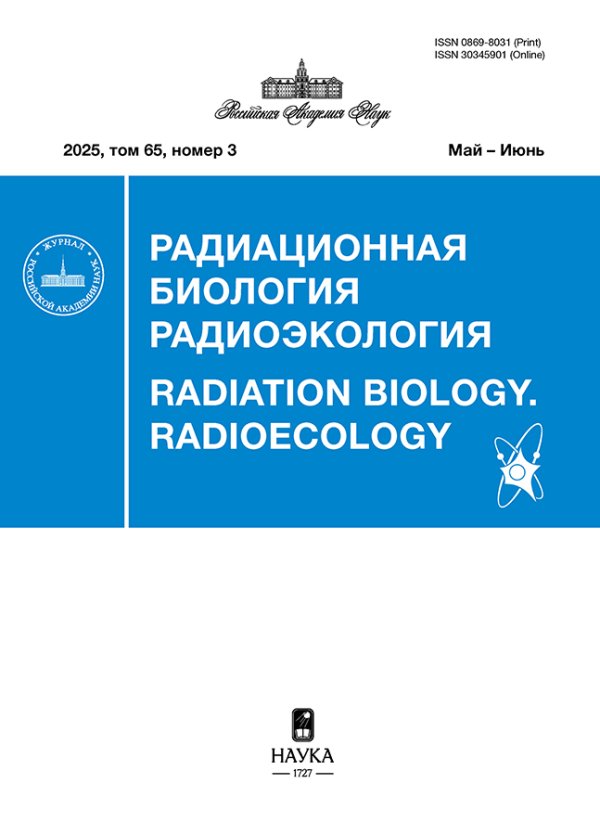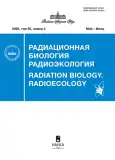Radiation biology. Radioecology
The journal publishes the results of studies of changes caused by the action of ionizing and non-ionizing radiation in biomatter at all levels of its organization, from the molecular to the ecosystem level: radiation chemistry of biomolecules and biophysics of radiobiological processes; molecular and cellular radiobiology; radiation genetics and cytogenetics; radiation biochemistry, pathophysiology, hematology and pathomorphology of exposed animals and humans; clinical radiobiology; radioprotectors and other anti-radiation agents; radionuclide toxicology, radiation epidemiology. The journal also publishes research materials on the migration of radionuclides in the biosphere and its components: terrestrial ecosystems, soil, vegetation and animals, hydrosphere and hydrobionts
We publish reviews on current problems of radiobiology, radioecology, and related disciplines, reviews of new books, and a scientific chronicle.
The Journal has been established in 1961.
Media registration certificate: № ФС 77 – 66710 от 28.07.2016
Current Issue
Vol 65, No 3 (2025)
Radiobiology of Plants
The Effect of Gamma Radiation on the Mitotic Index and Root Growth Endpoints of Allium Cepa Seedlings in Long-Term Experiments
Abstract
 272-287
272-287


General Radiobiology
Retrospective Dosimetry in the Southern Urals: 30 Years of Studies Within the Framework of the Project 1.1
Abstract
 241-259
241-259


Biological Efficacy of Pseudohypericin in Drosophila melanogaster Individuals under Normal Conditions and in Conditions Irradiation
Abstract
 260-271
260-271


Radioecology of Aquatic Systems
Assessment of Radiation Impact on the Freshwater Ecosystem Contaminated after the Accident at the Chemical Plant "Mayak"
Abstract
 288-306
288-306


Tritium in Sources of Drinking Water Supply in the Areas Affected by the Beloyarsk NPP and PA "MAYAK"
Abstract
 307-316
307-316


Radioecology of Plants
A Study of Cs-137 Distribution in the Trunk of Scotts Pine (Pinus Sylvestris L.) Growing in the Zone of Radioactive Deposition Resulting from the Chornobyl NPP Accident
Abstract
 317-326
317-326


Plutonium Uptake by Beans at Different Stages of Vegetation
Abstract
 327-334
327-334


Cytogenetic Effects in a Population of Agropyron Cristatum L. from the Site Where Tests of Radioactive Substances Were Carried Out at the Semipalatinsk Nuclear Test Site
Abstract
 335-348
335-348


Chronicle
In Memory of Evgeny Alexandrovich Krasavin
 349-351
349-351


100 YEARS SINCE THE BIRTH OF PROFESSOR VLADIMIR VLADIMIROVICH SHIKHODYROV — A LIFE DEDICATED TO RADIATION BIOLOGY
 352-354
352-354













